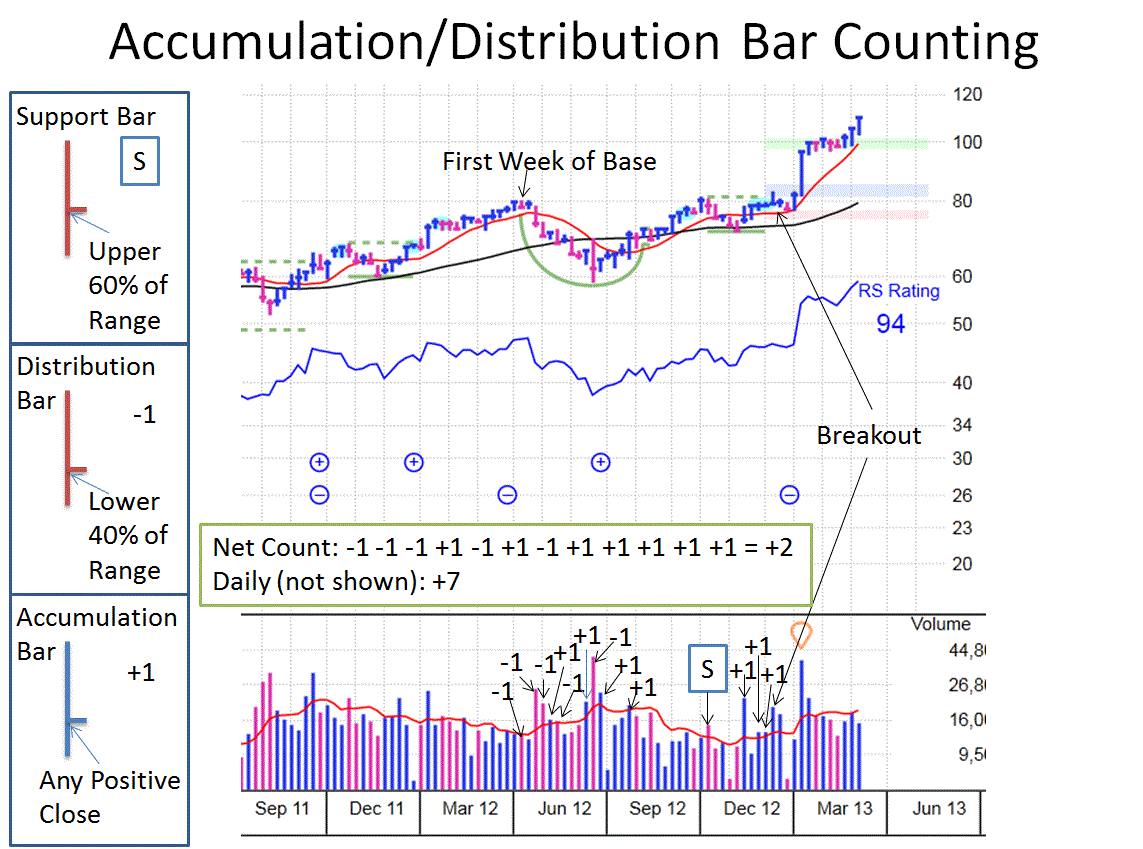Accumulation-Distribution counting in bases
Earlier today in the VIT forum I mentioned a stock REGN that showed more high volume sell off weeks in its base than high volume up weeks. The attached chart and procedure below shows a simple base counting technique taught by Bill O'Neil in seminars. A recent confirmation study has been performed analyzing 433 base breakouts from 2003 through 2007. The stocks came from the IBD 100 lists of the period. The conclusion of the study shows that bases showing a non-negative net A-D count had 3-times greater success rate of achieving 22.5% gains before seeing a 7.5% loss than bases exhibiting a negative A-D count.
There are very few "triple" odds in investing and thus I avoid stocks showing negative net A-D counts.
The net counting procedure is as follows:
1. On a weekly chart find every tall volume bar inside of the base under study showing above average volume (10-week average volume)
2. Assign a +1 value to each tall blue bar (positive close)
3. Assign a -1 value to each tall red bar that closes in the lower 40% of the bar's range
4. Don't count support bars: tall red bars that close in the upper 60% of the bar's range. These are positive signs in a base.
5. Sum the +1 and -1 values to produce a weekly chart net count.
6. Do the same procedure on a daily chart using 50-day average volume
7. Sum the values from 5 and 6 to produce a net A-D count.
A base starts on the first down week (day) after a closing high on the left side of the base. Count each tall bar until the breakout. The breakout week (day) is not included in the count. MarketSmith has a feature if you have the optional pattern recognition feature enabled. The cursor shows the percent closing range of any bar. This was added to enable easier bar counting. Before I had this feature I had to inspect visually close calls using a calculator and the following formula: % closing range = 100*(C-L)/(H-L)

Mike Scott
Cloverdale, CA





 Reply With Quote
Reply With Quote